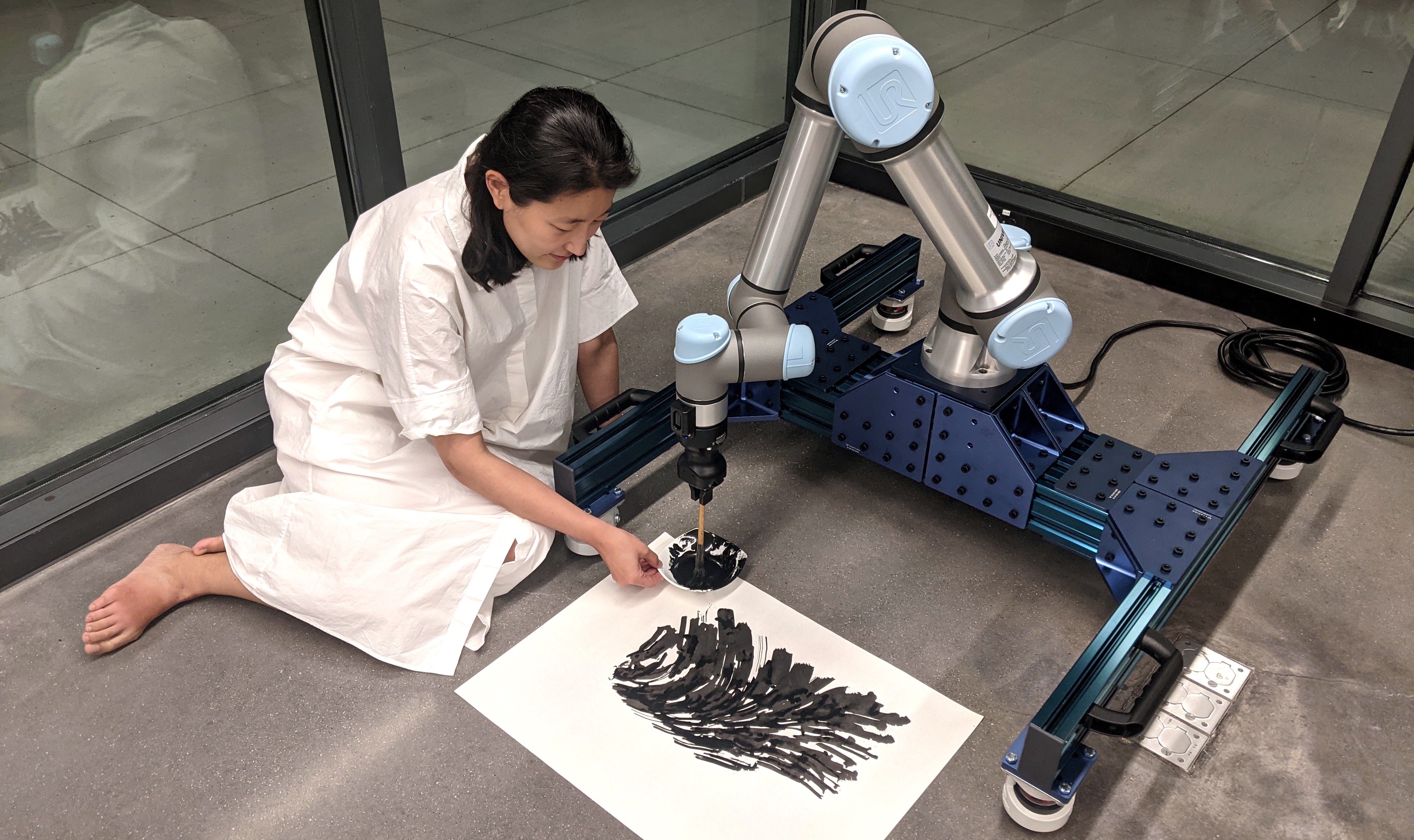Art and Artificial Intelligence
July 22, 2022
Harnessing the power of robots for art, landscape, mental health wellness
BATON ROUGE - Faculty from the LSU College of Art and Design are using robots and artificial intelligence in combination with art and landscape.

In the project "Contingent Dreams," compositions were generated by algorithms and then drawn together by the artist and robot.
– Optional: Hye Nam
Associate Professor of Art Hye Yeon Nam and Assistant Professor of Landscape Architecture
Brendan Harmon are collaborating on two different projects.
The first is through a series of robotic drawings. The project, called “Contingent
Dreams,” uses algorithms to generate compositions, drawn together by an artist and
a robot.
“If we consider computational tools through the lens of distributed cognition, AI
and machine learning can help us to understand the world around us in non-human ways
while robotics lets us act in non-human ways. These computational tools enable a synthetic
creativity. There is an algorithmic aesthetic peculiar to technologies we use - AI,
machine learning, data science and robotics. These aesthetics of the algorithm can
be open-ended, contingent, performative, abstract and non-representational. It is
an aesthetic that evokes emergence and infinity,” Harmon said.
Harmon said he and Nam are developing new works for the series that use machine learning
and machine vision so that the robot can responsively interact with and learn from
the artist.
“Technology, from pigments for paleolithic cave paintings to robotics, has always
shaped the practice of art and design. New technologies create new artistic media,
new design processes and thus novel aesthetic possibilities,” Harmon said.
“I believe it is important to see AI technologies as creative collaborators, not as
mere tools. AI technologies have assisted and augmented human creativity and we would
like to demonstrate these collaborations with a form of artistic drawings. This can
open up a broader potential for future directions to work with AI technology,” Nam
said.

A daily time series of letterforms grown from seeds.
– Optional: Brendan Harmon and Hye Nam.
Their second project is called “Ecological Robots.”
“We are exploring how robots can be used to plant, monitor and manage landscapes,”
Harmon said. “We are integrating sensors, machine vision and machine learning techniques
to monitor plant growth.”
They plan to deploy the system on an unmanned ground vehicle for field testing.
“With data science and machine learning, we can study the spatiotemporal processes
that shape landscapes and integrate these into our design processes. With these technologies,
we can design resilient landscapes that respond to social, ecological and geomorphological
processes,” Harmon said. “With robotics, we have the means to realize, to construct
and plant these landscapes, however complex they may be. By using all of these technologies
together, there is the potential to design highly functional landscapes that have
a unique sort of beauty, that express an algorithmic ecology.”
Nam is also utilizing code through her digital art class called Code to Cope. This
course uses science, technology, engineering, arts and mathematics, or STEAM, curriculum
to teach students how to design, develop and practice coping mechanisms while learning
a JavaScript programming language that Nam developed.
“When students learn STEAM material and self-care simultaneously, they can have better
mental wellness, have better learning outcomes and continue on STEAM pathways,” Nam
said.
In class, students interact with characters using their breathing, practice machine
learning to control visual elements with their bodies and develop collaborations with
robots and nature for meditation.


